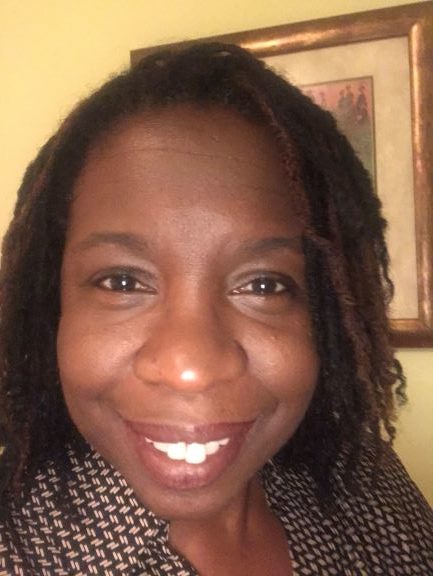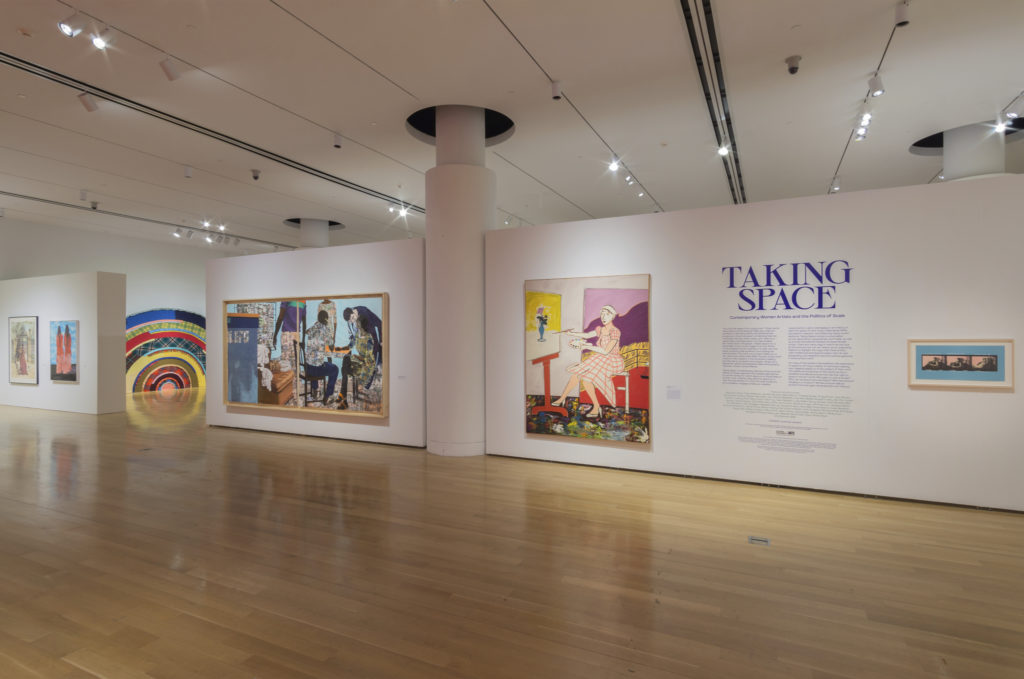At PAFA not only have women claimed space, they’re making history
 September 13, 2021
Category: Featured, Long, Purpose
September 13, 2021
Category: Featured, Long, Purpose
Updates
Correction: Elizabeth Colomba's name was originally misspelled and has been corrected. Also, we clarified Dr. Brittany Webb's status as PAFA's first African American full-time staffer with the curator title. (9/13/21 at 1:25 p.m.)When Philadelphia native Deborah Willis was a student at what is now the University of the Arts, she was one of three minorities in her Introduction to Photography class. Her professor at the time told her it was a shame she was in his class, because she was “taking up a good man’s space.”
Over 40 years later, that dismissive assessment birthed the title of a current exhibit at the Pennsylvania Academy of Fine Arts (PAFA), with the lead piece by Willis.
Taking Space: Contemporary Women Artists and the Politics of Scale features the works of 59 women artists and is one of three PAFA exhibits celebrating women. The exhibits are in honor of the 100th anniversary of the 19th amendment, which granted women the right to vote. All the art is from PAFA’s permanent collection.
Dr. Brittany Webb said she and her co-curator, Jodi Throckmorton, began thinking holistically about women and the space they take. “We thought about the space of ideas, beliefs, the physical space of the body and the environment,” Webb said.
I Made Space for a Good Man is a series of three self-portraits of a then-pregnant Willis. The title is an ironic play on that professor’s comment. Willis, who now has a doctorate, and among other titles, chairs the Department of Photography at NYUs Tisch School of the Arts, did indeed make space for a good man — she is the mother of accomplished artist and author Hank Willis Thomas.
Webb said the story behind Willis’ piece is “a perfect anchor” as it speaks to how often women’s space in art history is devalued.
“When a professor says something like that to a young Black woman, that’s more than just denying space in an art class,” Webb said. “For me it’s also about [denying her] the imaginative space of becoming an artist.”
Willis’s reclaiming self-portrait provides an introduction to other self-images that either parody female stereotypes such as the self-portrait by Joan Brown, or stand counter to popular depictions of the female body as in “Janie” by Clarity Haynes.
“Mirror” by Ellen Harvey, is a massive hand-etched glass piece showing images of PAFA’s landmark building. But here the building’s images are dilapidated and become a backdrop as the viewer instead becomes the focal point through a myriad of reflective panels.
While “Mirror” is certainly the exhibit’s largest installation, according to Webb it is one of the many works giving women’s art the real estate not often seen in museums.
Additionally, Taking Space either challenges what you think you see or what you may be used to seeing.
“I Always Face You” (Njideka Akunyili Crosby) is a six-foot high two-panel painting mixing acrylic, charcoal, and photographs. From a distance, the painting seems to depict merely a tender moment between the African artist and her American husband. Yet when viewed closely, reveals cut-out images from the artists’ Nigerian homeland. The technique is meant to symbolize the melding of the two cultures.
In “Riding Places,” a stunning watercolor by Elizabeth Colomba, a well-dressed Black woman stares authoritatively from the canvas while appearing completely in control of the galloping horse beside her. Colomba said she wanted to present a counter image of a Black person in a period era, rather than the oft-depicted subservient character.
And in a case of life imitating art, Webb herself is carving out her own space at PAFA, the nation’s first art school and museum.
Webb is PAFA’s first African American fulltime staffer with the curator title. However, she carefully notes that a leap to labeling her PAFA’s first African American curator is complicated.
“I think the question of curatorial ‘firsts’ can be fraught in this generation of art museums,” she said. “Being the first African American staff member to have curatorial responsibilities and a curator title isn’t necessarily the same thing as being the first African American or person of color to curate an exhibition for that institution.” Many museums hire guest curators, or they are part of a larger team but not in a lead position.
Still, Webb acknowledged the inequities in representation. “You can name the high profile African American curators, which is telling,” she said. “When we’re not having a conversation about a person of color [as a curator] then we know we’ve made some progress.”
Webb began her art career at the African American Museum in Philadelphia (AAMP) and said that historically Black-led institutions do not get enough credit for “providing a huge pipeline of talent. They are doing the kind of early career development work that larger institutions either don’t do well or are not evenly distributing the work,” Webb said.
Webb said she is motivated by her work to research, teach, and write about underrepresented stories. Of the 59 artists in the exhibit, 18 are women of color.
“I love telling a history that hasn’t been told and all the spaces of marginality,” Webb said. “There are a lot of possibilities in doing this work now in this moment of correction.“
Anne McCollum is another woman making history at PAFA — as the first woman board chair in the museum’s 216-year history.
But McCollum acknowledged other firsts for women at PAFA that date back to the 1800s. In 1895, May Howard Jackson, was the first African American to receive a PAFA scholarship, and Cecelia Beaux became the first fulltime female professor as well as the first woman artist featured in PAFA’s permanent collection.
“We believe that an accurate telling of the history of American art needs to be fully reflective of our community,” McCollum said. “PAFA ranks first among 26 major American art institutions in the percentage of museum acquisitions [of] female artists over the past decade. More than 58% of PAFA’s permanent collection acquisitions during this time have been art created by women versus a national average of around 11%.”
As for Webb, she is currently curator of nearly 300 sculptures by John Rhoden, an African American sculptor whose public art is on display on the campuses of major institutions across the country. His sculpture, “Nesaika,” was installed at the entrance of the AMMP in the 1970s.
###
Taking Space is on exhibit through September 19, 2021.
Trending News











